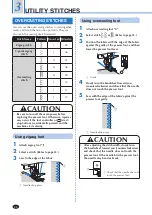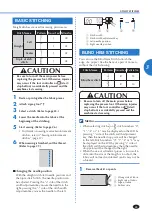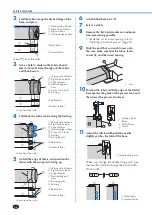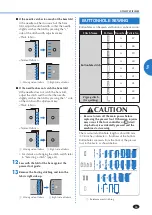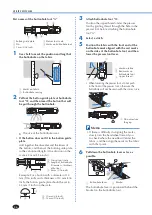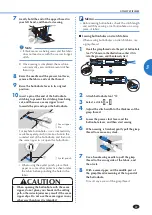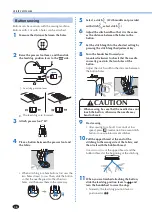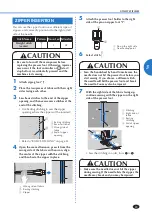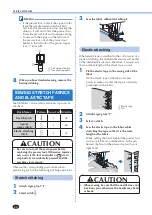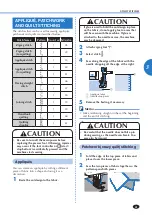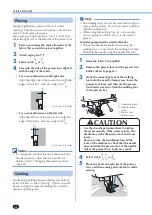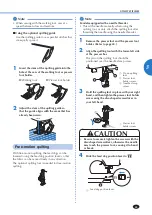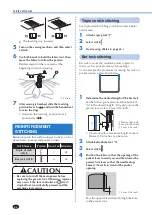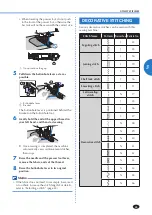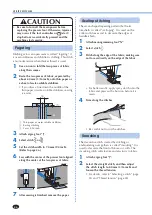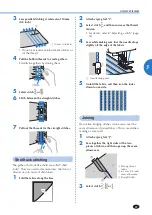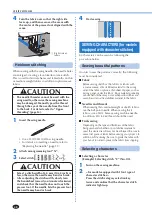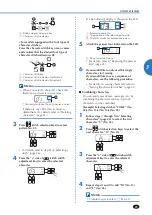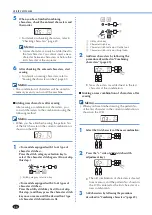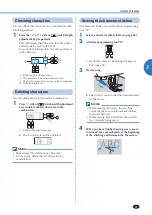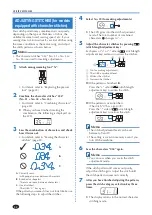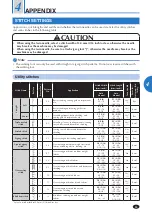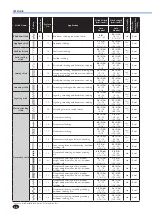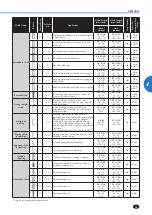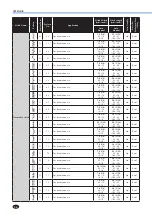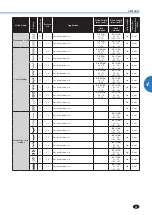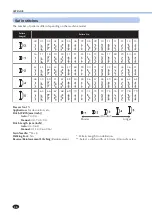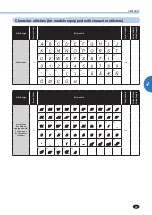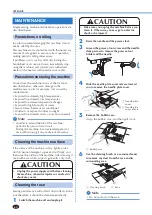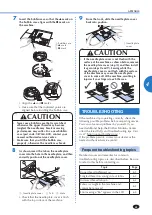
UTILITY STITCHES
46
CAUTION
• Be sure to turn off the main power before
replacing the presser foot. Otherwise, injuries
may occur if the foot controller or (start/
stop button) is accidentally pressed and the
machine starts sewing.
Fagoting
Stitching across an open seam is called “fagoting”. It
is used on blouses and children’s clothing. This stitch
is more decorative when thicker thread is used.
1
Use an iron to fold the two pieces of fabric
along their seams.
2
Baste the two pieces of fabric, separated by
about 4.0 mm (3/16 inch), onto thin paper or
a sheet of water-soluble stabilizer.
• If you draw a line down the middle of the
thin paper or water-soluble stabilizer, sewing
is easier.
1
2
3
1
Thin paper or water soluble stabilizer
2
Basting stitching
3
4 mm (3/16 inch)
3
Attach zigzag foot “J”.
4
Select stitch or .
5
Set the stitch width to 7.0 mm (1/4 inch).
(Refer to page 26.)
6
Sew with the center of the presser foot aligned
along the center of the two pieces of fabric.
7
After sewing is finished, remove the paper.
Scallop stitching
The wave-shaped repeating pattern that looks
like shells is called “scalloping”. It is used on the
collars of blouses and to decorate the edges of
handkerchiefs.
1
Attach monogramming foot “N”.
2
Select stitch .
3
Stitch along the edge of the fabric, making sure
not to sew directly on the edge of the fabric.
• For better results, apply spray starch onto the
fabric and press with a hot iron before it is
sewn.
4
Trim along the stitches.
• Be careful not to cut the stitches.
Smocking
The decorative stitch created by stitching or
embroidering over gathers is called “smocking”. It is
used to decorate the front of blouses or cuffs. The
smocking stitch adds texture and elasticity to fabric.
1
Attach zigzag foot “J”.
2
Select the straight stitch, and then adjust
the stitch length to 4.0 mm (3/16 inch) and
loosen the thread tension.
• For details, refer to “Selecting a stitch” (page
25) and “Thread tension” (page 28).

